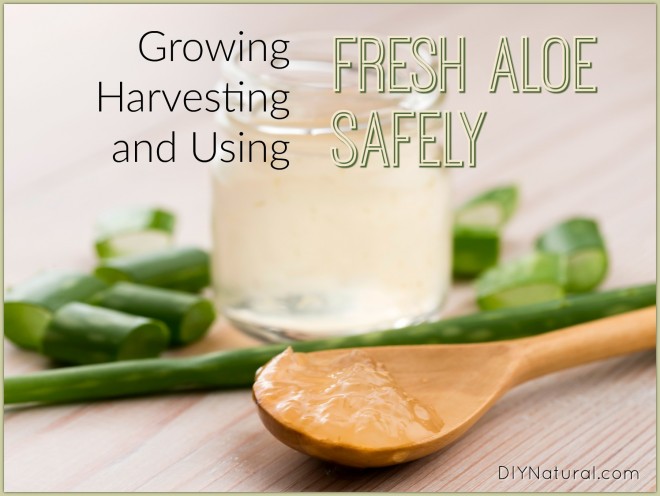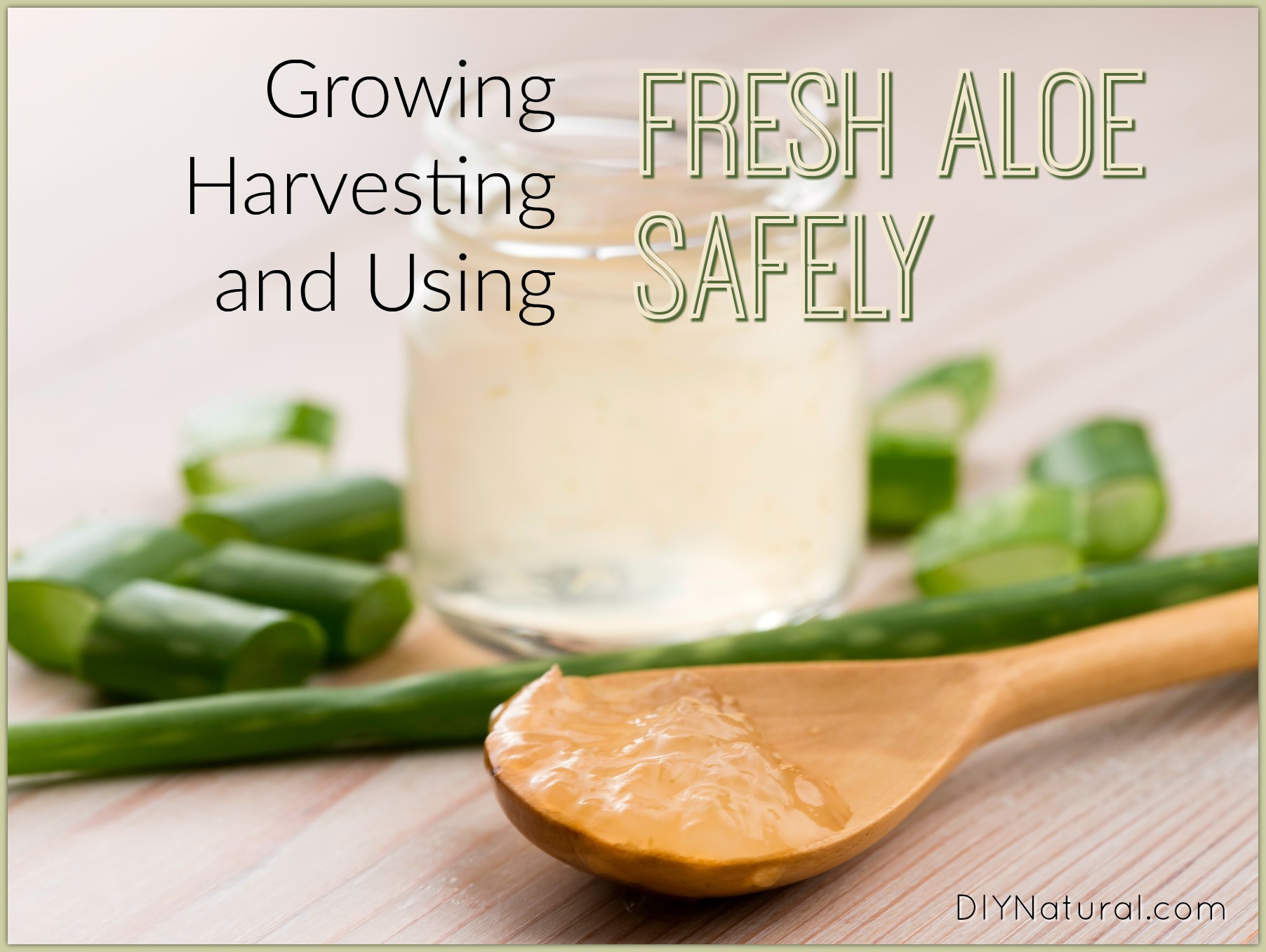
Aloe Vera Uses
Do you have an aloe plant in your home? Chances are you do. These common houseplants multiply like bunnies. That has always suited me just fine since aloe plants (we commonly use Aloe barbadensis) are so very useful.
Most people know the aloe plant as a first aid for burns, and that is indeed true, but there is so much more the aloe plant can do for us!
Sure, you can always run down to your local health food store and buy aloe vera juice or a bottle of pure gel. But you don’t need to go to the store if you’re growing your own supply, and there are some good reasons to do-it-yourself. Here are some tips on growing and using your own:
How to Grow Aloe
Aloe is a sub-tropical plant. It prefers a good amount of sunlight, warm temperatures, and a well drained soil. In the winter, aloe tends to go dormant and barely needs to be watered at all. I keep my plant right next to the fireplace on the hearth.
In the summer, these plants prefer to be out in the light and heat. Water them until the soil is damp and wait until they dry out again before you repeat. I don’t really worry about watering my aloe in the summer unless we’re in a drought. I know the rain will take care of it.
Aloes like to get a bit crowded in their pots. They prefer a pot that is wider than it is deep to accommodate all the “pups” it will have. Occasionally, these new plants will need to be cut off of the parent plant to keep everyone healthy.
Using Fresh Aloe at Home
Most people keep an aloe plant around for minor cuts, burns, and bug bites. I think less people are familiar with how to use aloe internally. What makes the matter worse is all the confusion over aloe in the media these days. Recently, California named aloe as a known carcinogen. If you have been buying aloe juice this may give you pause, but there is a good explanation.
Internal Aloe Vera Uses
If you want to “eat” your aloe, you aren’t going to cut off a leaf and begin chewing it in its whole form. Those who frequently eat their own aloe plants always cut away the green outer leaf to reveal the clear “meat” and gel inside. In order to prepare aloe at home you first slit the leaf in half, lay it open and carefully skim out the internal gel and meat with a spoon. It takes a bit of time and work, but one leaf is all you need in a day. This meat can be added to a bit of juice or a smoothie for digestive benefits.
A large portion of the products we find in the store are preparing aloe in this way as well. Unfortunately, there has been a recent move to suggest that we use the whole leaf instead. From a product maker’s standpoint, I see how this happened.
Why Whole-Leaf Aloe Products Emerged
If you are making an aloe product and you’ve got to find a way to get just the inside of the aloe leaves out of hundreds of pounds of raw material, you may start to think of a way around this process.
Unfortunately, in a recent two-year study done by The National Toxicology Program in conjunction with the FDA, it was found that non-decolorized, whole plant aloe products are possible carcinogens. The green outer portion of the leaf contains the problematic alkaloids.
Using Aloe Safely
When I first saw the new study I wondered if people would stop using aloe as a health supplement. While the findings should make you more cautious about some of the supplements you find in the store, you can still carefully remove the outer coating of the aloe at home. The answer in the case of aloe is simple – grow it yourself and prepare it properly!
Want to grown your own aloe at home? Find aloe plants online here. If you don’t want to grow your own, you can find organic inner-leaf aloe vera juice here.
*******




Hi Dawn, I love making my own lotions and creams. I thought I would use my own aloe,whole. It made a wonderful cream, BUT, I forgot to cut off the outer spines from the leaves, it was stingy. I made it again, and cut open the leaves andscooped the gel out. It was just perfect!
Wondering if it is dangerous to still use aloe if your plant has yellow mushroom fungus growing in the pot, or had, sigh. I know I was over watering, trying to get it back on track.
Dawn, thank you for this article. It came at just the right time. I have been trying to help my sister with her perioral dermatitis and I found a recipe for a facial mask that included fresh aloe. I asked myself where I would find a fresh aloe plant in northern Michigan? and Voila! your article has a link to solve my dilemma!
I am very glad that there is a natural way to make our own products.
One day soon we all may have to do this to have any at all and to save so this is super tohave the knowledge..thanks for sharing!